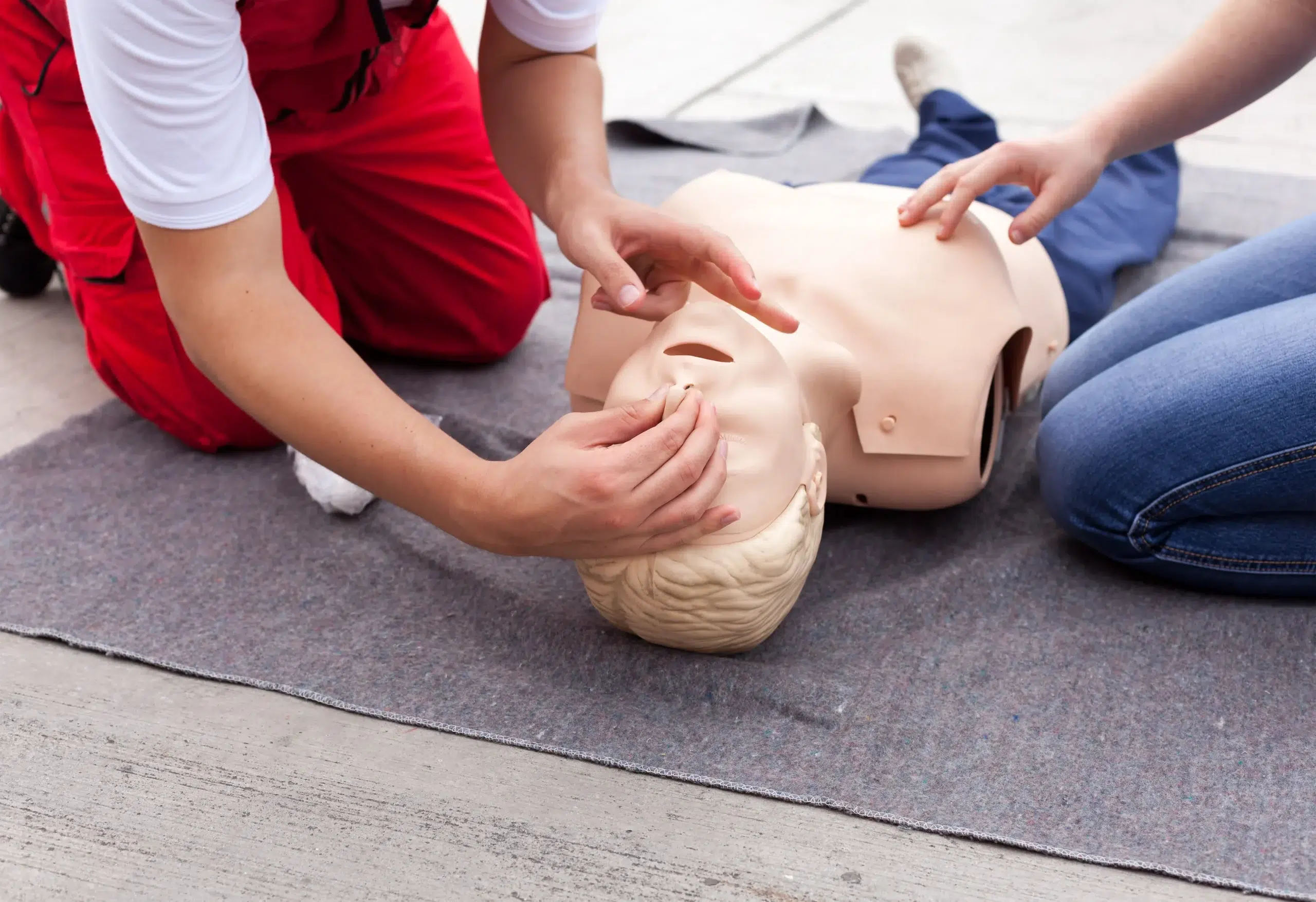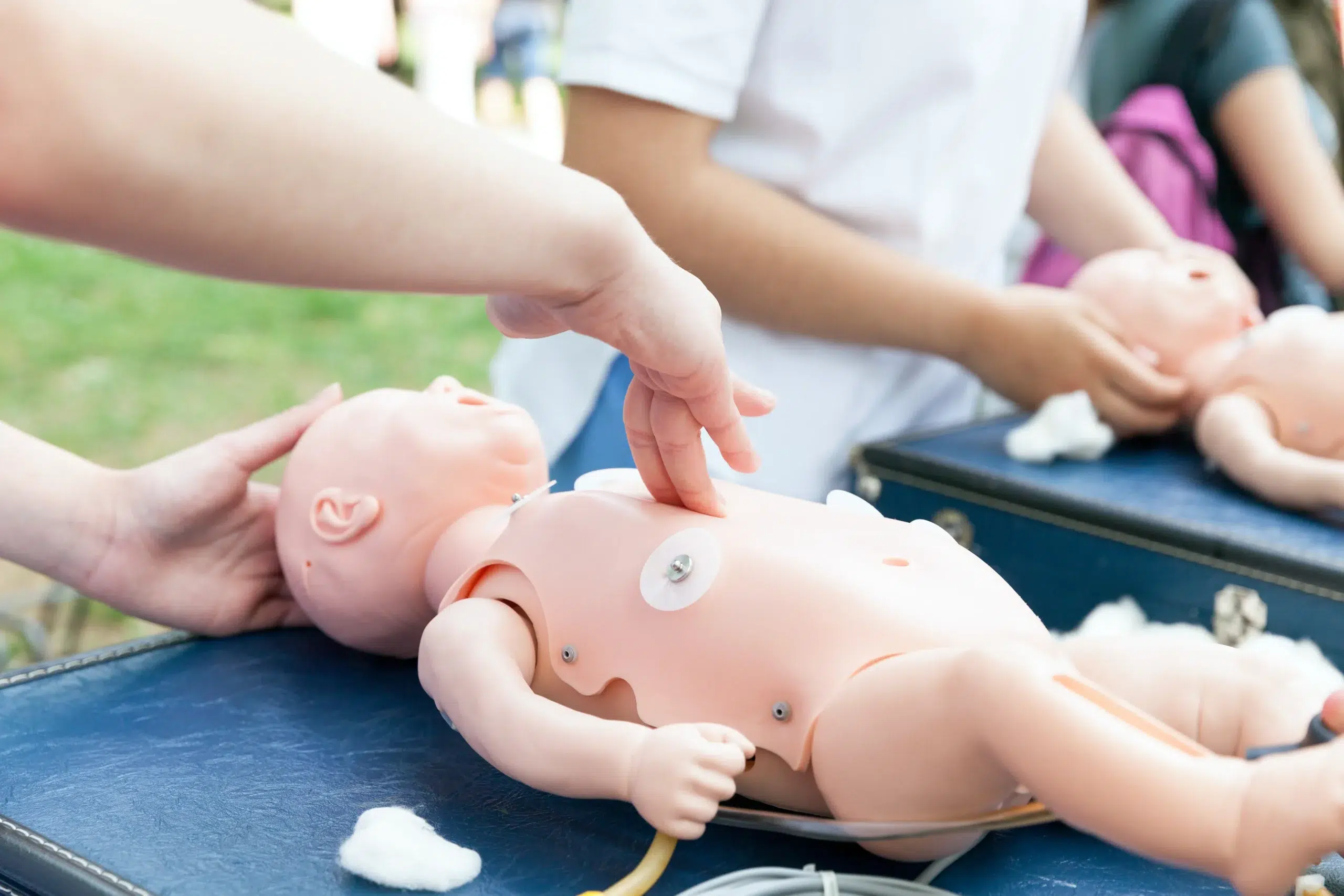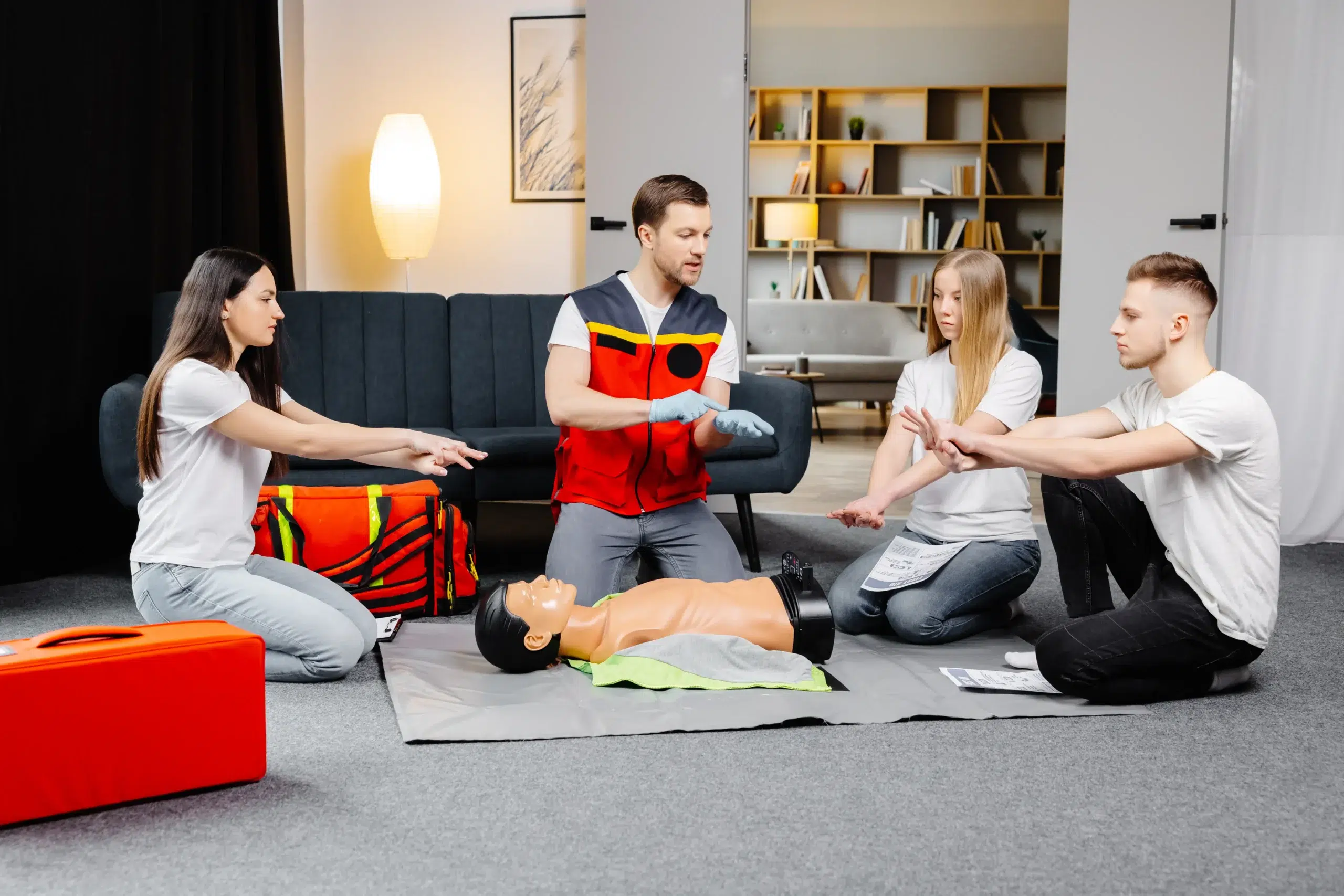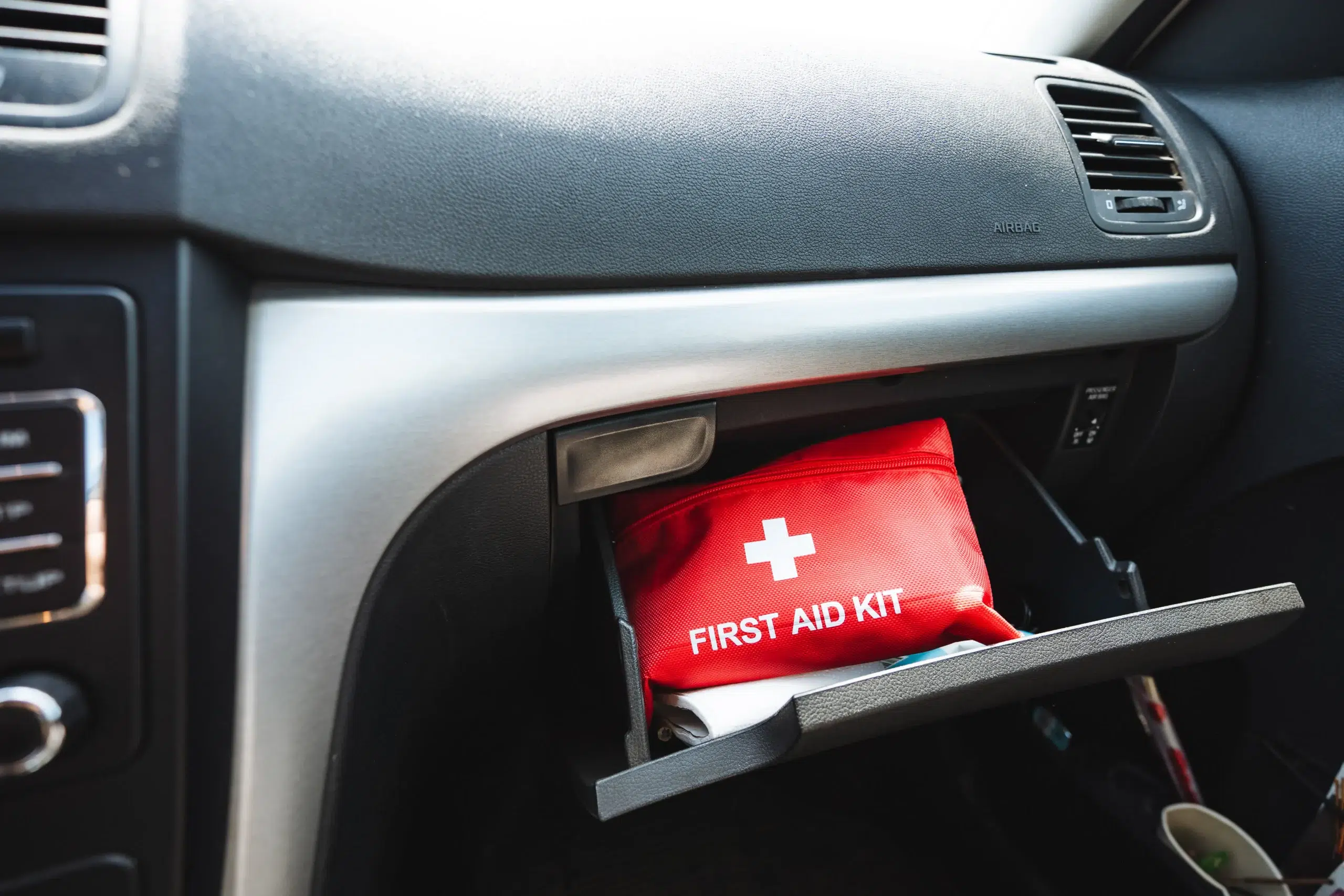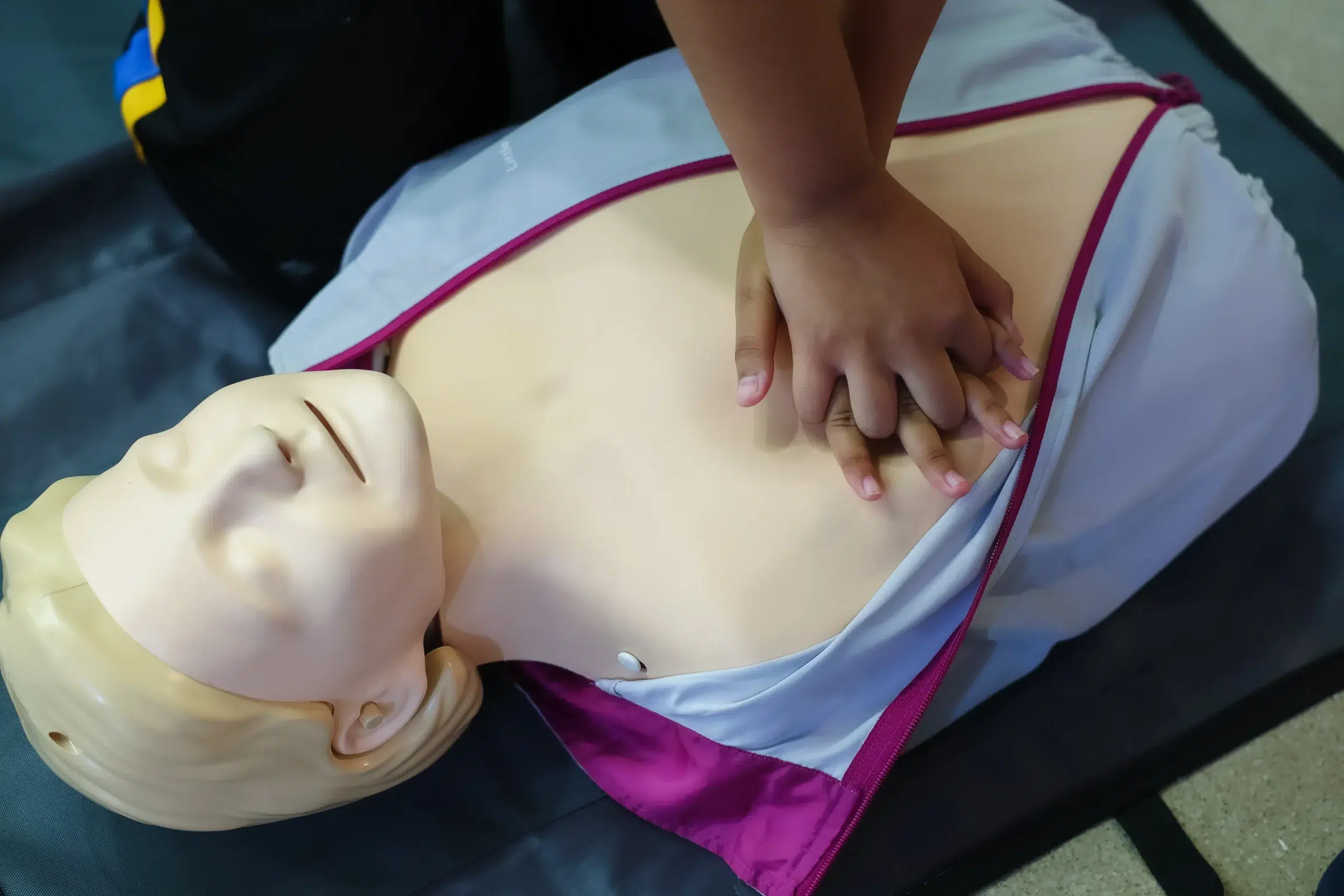As a healthcare provider, you face unique challenges every day, especially when caring for young patients. Pediatric emergencies demand quick thinking and specialized skills. That’s where PALS certification comes in. PALS empowers you to confidently handle critical situations involving infants and children. This post is your guide to understanding PALS, its importance, and how it can benefit your career. We’ll also explore how to find “American Heart Association PALS near me” and what to expect during the certification process. Whether you’re in Roseville, Rocklin, or Sacramento, getting PALS certified is an investment in your skills and the well-being of your young patients.
Key Takeaways
- PALS certification goes beyond basic CPR: It gives you the specialized skills to confidently handle pediatric emergencies, from respiratory distress to cardiac arrest, leading to better patient outcomes.
- Find a PALS course that fits your lifestyle: Whether you thrive in a classroom or prefer online learning, choose a format—in-person or blended—that works for you and helps you succeed.
- Stay current with your PALS skills: Renew your certification every two years and explore continuing education options to keep your skills sharp and provide the best care for young patients.
What is PALS?
Definition and Purpose
Pediatric Advanced Life Support (PALS) certification gives you the skills to respond to life-threatening emergencies in children and infants. This specialized training goes beyond basic CPR, focusing on the specific physiological and developmental differences in pediatric patients. PALS emphasizes a systematic approach to assessment, treatment, and stabilization, giving healthcare providers the confidence to handle critical situations effectively. The goal is to stabilize young patients until they can receive further medical care.
Importance for Healthcare Professionals
PALS certification is essential for any healthcare professional regularly interacting with infants and children. This includes doctors, nurses, paramedics, respiratory therapists, and emergency medical technicians. The specialized focus on pediatric emergencies provides skills not typically covered in basic life support or CPR courses. PALS training provides knowledge and practical skills to manage a range of pediatric emergencies, from respiratory distress to cardiac arrest, ultimately improving patient outcomes. Holding a current PALS certification demonstrates a commitment to providing high-quality care, a valuable asset in any healthcare setting.
Why Get PALS Certified?
PALS certification, short for Pediatric Advanced Life Support, goes beyond basic CPR. It equips you with specialized knowledge to handle life-threatening emergencies in infants and children. Whether you’re a seasoned healthcare provider or just starting your medical journey,
Improve Pediatric Emergency Response
Think of PALS certification as your toolkit for pediatric emergencies. It provides the skills to quickly assess a situation, make critical decisions, and provide effective interventions. The PALS Provider Course from the American Heart Association emphasizes high-performance team dynamics and high-quality individual skills, ultimately improving outcomes for young patients facing respiratory emergencies, shock, or cardiopulmonary arrest. This specialized training empowers you to confidently manage emergencies and potentially save lives. PALS certification equips individuals with the skills to recognize and respond to these critical situations.
Advance Your Career
In the competitive healthcare field, PALS certification sets you apart. It demonstrates your commitment to providing the highest quality care for young patients, a valuable asset for any healthcare professional. Feedback from past participants highlights how PALS courses enhance preparedness for real-world emergencies. Many believe that experienced healthcare providers don’t need PALS training, but this is a common misconception. Even seasoned providers benefit from the focused training and updated guidelines offered in PALS certification courses, ensuring they stay at the forefront of pediatric emergency care. Adding this credential to your resume can open doors to new opportunities and career advancement.
Find PALS Courses Near You
So, you’re ready to get your PALS certification—great! Now, let’s find the right course for you. There are several avenues you can explore, each with its own advantages.
AHA Training Centers
A convenient way to find high-quality PALS training is through an AHA Training Center like Roseville CPR Classes. These centers adhere to the latest AHA guidelines and offer consistent instruction. AHA Training Centers often provide various course formats, including in-person, blended learning (online coursework combined with in-person skills sessions), and continuing education courses for recertification. You can typically find a list of Training Centers on the American Heart Association website.
Hospitals and Medical Facilities
Many hospitals and medical facilities offer PALS courses, often catering to their own staff but sometimes open to the public as well. These courses are usually taught by experienced healthcare professionals and provide hands-on training in a realistic clinical setting. Check with your local hospitals or search online for “PALS courses near me” to find options in your area. For example, the Emergency & Health Training Center offers PALS Renewal classes.
Online Course Locators
Websites like ACLS.com offer a convenient way to locate PALS courses online. These platforms often partner with various training providers, giving you a centralized place to compare course formats, schedules, and pricing. Online course locators can be especially helpful if you’re looking for a specific type of course, such as a blended learning option or a renewal course.
Local CPR Training Providers
Independent CPR training providers often offer PALS certification alongside other courses like BLS and ACLS. These providers can be a good option if you’re looking for a more personalized learning experience or a smaller class size. Do some research to find reputable providers in your area, read reviews, and compare what they offer. Often, local providers offer more flexible scheduling and competitive pricing. For example, All Heart Atlanta offers a variety of AHA courses.
PALS Certification: Cost & Value
Getting PALS certified is an investment in your career and the lives of young patients. But how much does PALS certification cost, and what affects the price? Let’s break down the expenses and explore ways to find the best value.
Average Price Range
The cost of a Pediatric Advanced Life Support (PALS) course can differ based on several factors. Generally, you can expect to pay between $175 and $275 for a comprehensive PALS course through the American Heart Association. For example, their PALS Plus® course is around $273.00, while the HeartCode® PALS blended learning option is typically $173.00. These prices reflect the different learning formats and the depth of training provided.
Factors Affecting Cost
Beyond the standard AHA courses, PALS course fees can range from $55 to $300 depending on the training center and the type of course you choose (like a full course versus a skills session). Some organizations offer combined courses, such as BLS/ACLS, which can be a smart way to save money if you need multiple certifications.
Group Discounts and Promotions
If you’re training with colleagues or have a group interested in PALS certification, look for group discounts. Many training centers offer reduced rates for groups of two or more. For instance, some providers offer a 20% discount on PALS renewal classes for groups, making it more cost-effective to certify as a team. Also, keep an eye out for promotional offers, which can sometimes include discounts on combined courses or other incentives. Roseville CPR Classes offers discounts for group bookings, so check them out if you’re in the Roseville, Rocklin, or Sacramento area. Getting certified together can strengthen your team’s skills and potentially save you money.
Prepare for Your PALS Course
Getting ready for your PALS course involves a few key steps. Understanding the required knowledge and skills, completing pre-course work, and ensuring you have a current BLS certification are all essential for a smooth learning experience. Let’s break down each of these to help you feel confident and prepared on course day.
Required Knowledge and Skills
The PALS course emphasizes high-quality CPR and other advanced life support techniques for pediatric emergencies. A strong foundation in basic life support is crucial. You should be comfortable with CPR, recognizing the signs of respiratory distress, and understanding basic airway management. The course builds upon this foundation, introducing more advanced concepts and interventions.
Pre-Course Work and Assessments
Most PALS courses require pre-course work, often involving online modules, videos, and self-assessments. This pre-course work familiarizes you with core concepts before class, allowing for more in-depth discussion and hands-on practice during the course. Check with your chosen provider, like Roseville CPR Classes, for specific requirements and access the necessary materials. Remember to bring proof of completion to class.
BLS Certification Requirement
A common misconception is that experienced healthcare providers don’t need PALS certification. A current BLS certification is typically a prerequisite for PALS courses. This ensures everyone starts with the same fundamental knowledge and skills. If your BLS certification is expiring, or if you need to get certified, find BLS courses offered by various providers, including Roseville CPR Classes. Make sure your BLS certification is valid before your PALS course date.
What You’ll Learn in a PALS Course
A Pediatric Advanced Life Support (PALS) course equips healthcare providers with the knowledge and skills to respond effectively to pediatric emergencies. From understanding key medical concepts to mastering practical techniques, PALS training offers a comprehensive learning experience. Here’s a glimpse of what you can expect:
Key Topics Covered
PALS courses cover essential topics, starting with high-quality cardiopulmonary resuscitation (CPR) for infants and children. You’ll learn to recognize and manage respiratory distress, shock, and cardiopulmonary arrest in pediatric patients. The curriculum also emphasizes the systematic approach to pediatric assessment, helping you quickly and accurately evaluate a child’s condition in an emergency. PALS training addresses specific life-threatening conditions and illnesses common in children, providing the knowledge to provide appropriate interventions. You’ll also learn about effective medication administration and dosage calculations specific to pediatric patients. The American Heart Association provides detailed information on PALS course content.
Hands-on Skills Practice
PALS isn’t just about theory; it’s about practical application. The course includes extensive hands-on training, allowing you to practice essential skills like CPR, airway management, and vascular access. You’ll work with realistic mannequins and simulation equipment, providing a safe environment to refine your techniques and build confidence. This hands-on practice is crucial for developing muscle memory and ensuring you can perform these skills effectively under pressure. The HeartCode PALS program, for instance, includes approximately five hours of hands-on skills sessions, reinforcing the importance of practical experience. Learn more about PALS course options from the AHA.
Simulated Emergency Scenarios
To prepare you for real-world emergencies, PALS courses incorporate simulated scenarios. These simulations replicate the dynamic nature of pediatric emergencies, requiring you to apply your knowledge and skills in a realistic setting. You’ll work as part of a team, learning to communicate effectively, make quick decisions, and coordinate care under pressure. These simulated experiences are invaluable for building critical thinking skills and enhancing your ability to respond confidently in actual emergencies. For a deeper dive into the benefits of simulation training, explore resources like this PALS certification guide.
Team Dynamics and Communication
Effective teamwork is paramount in pediatric emergency care. PALS training emphasizes the importance of clear communication, defined roles, and coordinated efforts within a team. You’ll learn how to communicate effectively with other healthcare professionals, parents, and caregivers during stressful situations. The course also highlights the importance of closed-loop communication, ensuring that instructions are understood and followed precisely. By fostering high-performance teamwork, PALS training prepares you to provide the best possible care for pediatric patients in critical situations. The AHA’s PALS course options highlight the focus on team dynamics.
In-Person vs. Blended Learning
PALS courses typically come in two formats: traditional in-person classes and blended learning, which combines online coursework with hands-on skills sessions. Both options lead to the same certification, but the learning experience differs. Let’s weigh the pros and cons of each to help you decide which format best suits your needs.
Pros and Cons of Each Format
In-Person Learning:
-
Pros: In-person PALS training offers a dynamic, interactive learning environment. You’ll practice skills alongside your peers, receive immediate feedback from certified instructors, and benefit from real-time discussions and clarification. This format fosters camaraderie and allows you to learn from others’ experiences. In-person courses can be especially helpful for those who thrive in a structured classroom setting.
-
Cons: The primary drawback of in-person classes is the required time commitment. Attending a scheduled class can be challenging for busy professionals or those with inflexible schedules. In-person courses may require travel and potentially time off work, which can be a barrier for some.
Blended Learning:
-
Pros: Blended learning offers greater flexibility. The online portion allows you to study at your own pace, fitting the coursework around your existing commitments. This format is ideal for those who prefer self-directed learning or need to balance work, family, and other obligations. Online PALS study lets you review materials as needed and progress through the course at a comfortable speed.
-
Cons: While flexibility is a major advantage, some learners find it difficult to stay motivated and focused with online learning. The absence of a structured classroom environment can make it harder to complete the online modules. Blended learning still requires an in-person skills session, so you’ll need to schedule that separately.
Choose the Right Option
The best PALS course format depends on your individual learning style, schedule, and preferences. Consider how you learn best: Do you thrive in a classroom setting, or do you prefer independent study? Think about your availability: Can you commit to a set class schedule, or do you need more flexibility? Reflect on your learning goals: How important is hands-on practice and interaction with instructors and peers? Understanding your needs will help you choose the format that sets you up for success. If you’re still unsure, reach out to a course provider like Roseville CPR Classes. We’re happy to discuss your options and help you find the perfect fit.
What to Expect on Certification Day
So you’ve signed up for your PALS course—congrats! Knowing what to expect can help you feel confident and prepared on certification day. Here’s a rundown of what you’ll experience:
Course Duration
Plan for a dedicated learning experience. The in-person skills session portion of the HeartCode PALS course typically lasts about five hours, including breaks. This timeframe allows ample opportunity to practice essential skills and ask questions. Some courses may run slightly shorter, closer to four hours and 50 minutes, if breaks are minimized. Check with your specific PALS course provider for the exact schedule.
Exam Format and Passing Requirements
The PALS certification process involves demonstrating both your knowledge and practical skills. You’ll be evaluated on your ability to perform the techniques learned during the course. A key part of the process is self-evaluation. Take the time to honestly assess your confidence level with the material and your ability to perform the necessary skills. This will help you identify any areas where you might need extra practice.
Skills Assessment
The skills assessment is a crucial part of earning your PALS certification. The course is specifically designed to prepare you for this hands-on portion. By the end of the training, you should feel comfortable and capable of performing the required skills. This practical approach ensures you’re ready to respond effectively in real-life pediatric emergencies.
Maintain Your PALS Certification
Keeping your PALS skills sharp is crucial for providing the best possible care to young patients. This section covers how to stay current with your certification and further develop your knowledge.
Renewal Process and Frequency
PALS certification is valid for two years. To maintain your credentials, you’ll need to complete a PALS renewal course before your current certification lapses. These renewal courses are streamlined for healthcare providers already familiar with PALS training. Expect the renewal course to take approximately six hours. After completion, you’ll receive a new American Heart Association (AHA) CPR Care.
Continuing Education Opportunities
Beyond the standard renewal process, the AHA offers several ways to build your skills. Blended learning, combining online modules with in-person skills practice, is a popular choice. This format offers flexibility while still providing hands-on training. The HeartCode PALS program is another excellent option. This program uses an adaptive algorithm to personalize the learning experience, helping you grasp the material efficiently. Both options cover essential skills for pediatric emergencies, from CPR techniques to effective teamwork under pressure. The AHA website details these continuing education opportunities. You can also explore other resources like ACLS for additional information on PALS certification and online learning.
Top PALS Course Providers
Finding the right PALS course provider is essential for a high-quality learning experience. Here are a few reputable options to consider:
Roseville CPR Classes
Roseville CPR Classes offers PALS certification through its affiliation with Safety Training Seminars, an AHA Training Center. This ensures you receive training that meets the American Heart Association’s rigorous standards. They offer various CPR course options, including BLS, ACLS, and PALS, making them a convenient one-stop shop for all your certification needs. Serving Roseville, Rocklin, and Sacramento, they focus on providing excellent customer service and convenient scheduling. Check their website for group discounts and a low-price guarantee.
American Red Cross
The American Red Cross is a well-known provider of health and safety training. They offer PALS courses designed for healthcare providers, covering essential skills and knowledge needed for pediatric emergencies.
National Health Care Provider Solutions
National Health Care Provider Solutions (NHCPS) offers a range of AHA-approved courses, including PALS. They cater specifically to healthcare professionals and provide comprehensive training materials and experienced instructors. Learn more about their course offerings and schedules.
HealthStream
HealthStream is a leading provider of healthcare training and education solutions. They offer PALS certification courses in various formats, including online and in-person options, allowing you to choose the learning style that best suits your needs. Explore their website for more details.
ProMed Certifications
ProMed Certifications offers PALS courses with flexible scheduling options, designed to accommodate the busy schedules of healthcare professionals. They focus on providing high-quality training that meets AHA guidelines.
Related Articles
- PALS Certification Sacramento: Your Comprehensive Guide – Roseville CPR Classes
- PALS Certification in Roseville: Your Complete Guide – Roseville CPR Classes
- Online PALS Classes in Sacramento: A Complete Guide – Roseville CPR Classes
- PALS HeartCode Rocklin: Your Certification Guide – Roseville CPR Classes
- Online PALS Classes in Roseville: Your Complete Guide – Roseville CPR Classes
Frequently Asked Questions
Why is PALS certification important? PALS certification provides healthcare professionals with the specialized knowledge and skills to effectively manage life-threatening emergencies in infants and children. It goes beyond basic CPR, focusing on the specific physiological and developmental differences in pediatric patients. This specialized training can significantly improve outcomes for young patients facing critical situations.
What are the different ways I can find a PALS course? You can find PALS courses through several avenues: AHA Training Centers, hospitals and medical facilities, online course locators, and local CPR training providers. Each option has its own advantages, so consider factors like cost, schedule, and learning environment when making your decision.
How much does PALS certification cost, and are there ways to save money? PALS course fees typically range from $175 to $275 through the American Heart Association, but prices can vary depending on the training center and course format. Look for group discounts and promotional offers to potentially reduce the cost.
What should I do to prepare for my PALS course? Before your PALS course, ensure you have a current BLS certification, as it’s usually a prerequisite. Familiarize yourself with the required knowledge and skills, and complete any pre-course work or assessments provided by your chosen training center.
How do I maintain my PALS certification once I’ve completed the course? PALS certification is valid for two years. To maintain your credentials, complete a PALS renewal course before your current certification expires. The AHA also offers continuing education opportunities to help you stay up-to-date with the latest guidelines and best practices in pediatric emergency care.


